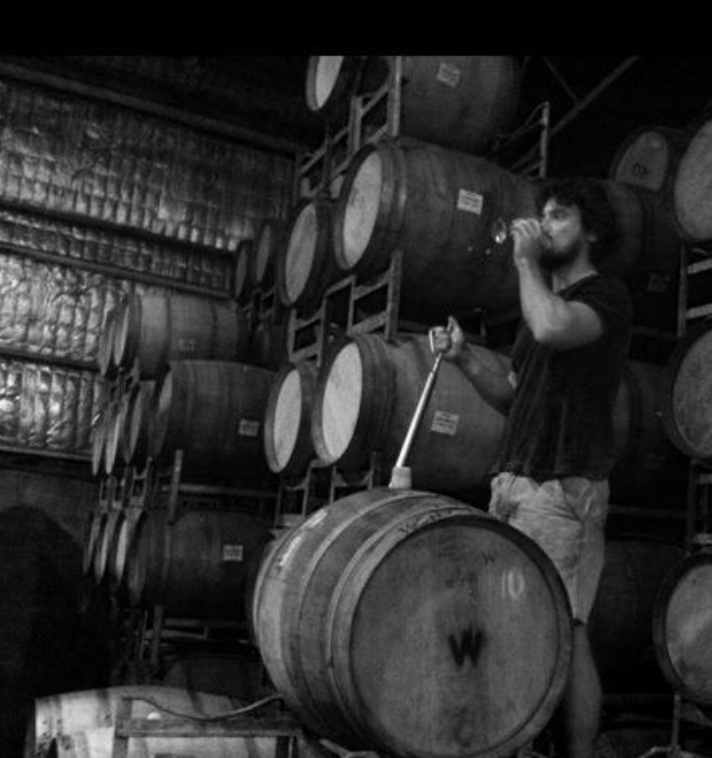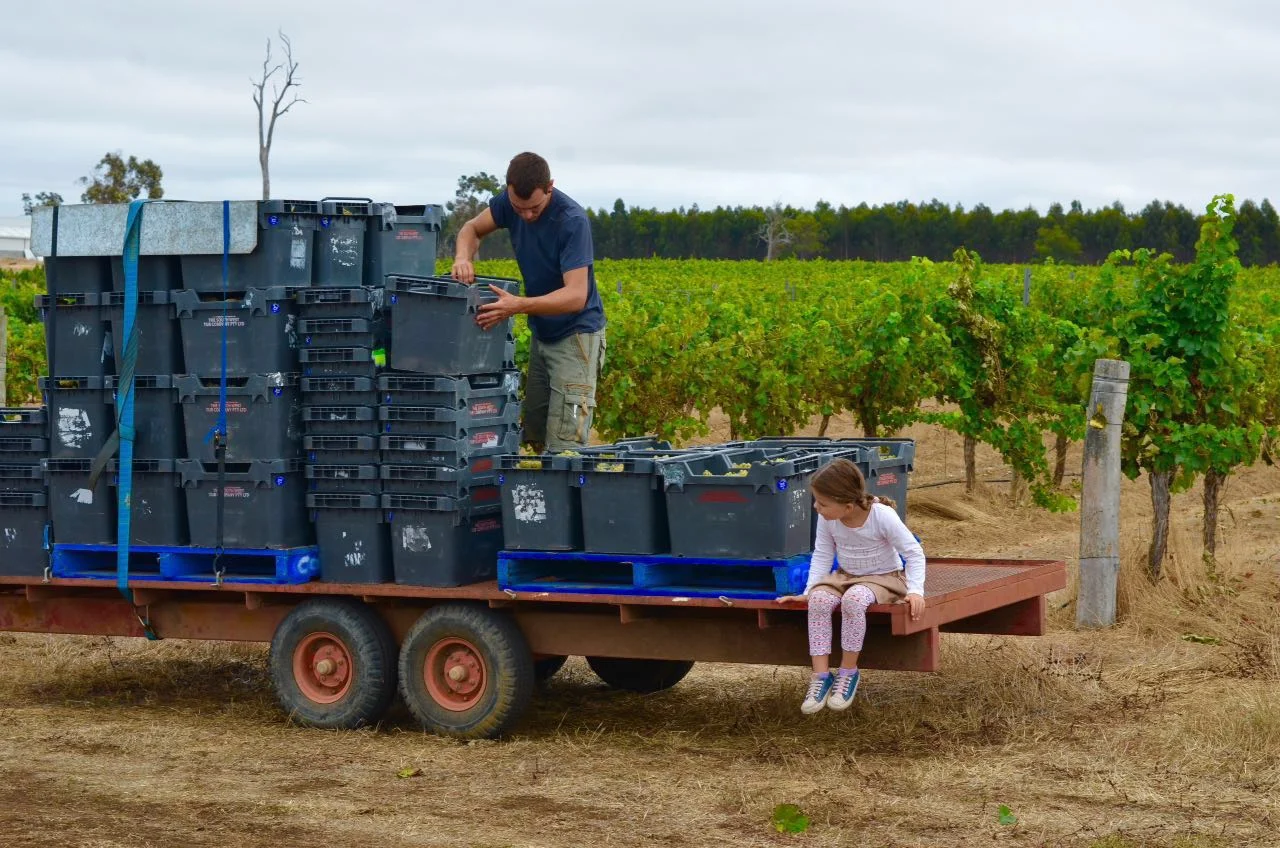2017 INTERNATIONAL PINOT NOIR TASTING | Margaret River, Western Australia
/Author: Alain H Lee - Founder, Maison Alainh Fine Wine Consultancy
Pinotphiles globally, unlike Vulcans will throw logic out the window, when it comes to the holy grail of seeking out fine Pinot Noir. Who would drive 3 hours for lunch? On October 28, I did for the 2017 International Pinot Noir Tasting held at the Howard Park Winery, Margaret River WA.
Tasting 18 leading Pinot Noirs from six countries that included Louis Jadot first project outside of France, their Résonance Vineyard Yamhill-Carlton AVA Oregon, USA. Musigny’s Domaine Comte Georges de Vogüé, wine maker François Millet collaboration with Prophets Rock wine maker Paul Pujol Cuvee Aux Antipodes, Otago NZ. South America’s sole representative came from Argentina. Charcra Cincuetta y Cinio made by Pierro Incisa della Rocchetta, grandson of the creator of Sassicia.
Burgundies tasted included Jean Grivot Vosne-Romanèe, Marchand & Burch Clos de Vougeot Grand Cru, Henri Boillot Volnay 1er Cru Santenots. Australia producers included Bindi Block 5 sourced from 1⁄2 hectare of vines in Macedon Ranges Victoria, Dexter Black Label, Mornington Peninsula.
Each of the 18 wines tasted had a story to share, foremost was that globally the exchange of ideas, about vineyard practices, between wine makers in both hemispheres combining to make outstanding Pinot Noir.
Tasting commenced at 10.30am, lead by three moderators Michael Dhillon from Bindi Wines, Ray Jordon - Western Australia’s leading wine reviewer and Louis Papaella a dedicated Pinot lover.
The tasting sessions where conducted in three brackets of 6 wines in the barrel room, bottling room and board room at Howard Park. Wines where first tasted in silence for 12 minutes with the wines listed in front of you, yet the order in which the wines where poured were not in sequence. When the 12-minute evaluation was up, each wine was evaluated, discussed and a show of hands where raised to pick the favorite from each session.
This blind tasting of the wines, placed each wine on a level playing field as we all used our sense of sight, smell, and taste skills to work out which wine was which and from which country. The tasting wasn’t about what wine was picked correctly. It was to show that quality Pinot Noir is a mystery at times in placing its country of origin. Even dedicated burgundy lovers where made to reevaluate the quality of new world producers.
After the tasting, there was lunch matched to the 7 wines from Howard Park and Marchand & Burch that included museum release wines. Michael Dhillon from Bindi wines put it in context, the logistics needed to put such an event together, that comprised 18 dozen well curated wines by Jeff Burch from his Pinot Noir collection. 1,800 wine glasses used for the tasting alone, another 900 glasses for lunch. The event ran as smoothly as a Swiss chronograph. Its shows the passion of Jeff Burch in bringing to Pinot Noir lovers in Western Australia a world class event, show casing the quality of Pinot Noir made from his own Great Southern vineyards to bench mark his wines with other leading producers from across the globe. It was a memorable experience that I would be more than happy to attend again. Thanks to the Burch family and team at Howard Park for hosting such a great event.


![IMG_4729[2].JPG](https://images.squarespace-cdn.com/content/v1/58e5ecbc9de4bb38c97f5809/1510227676726-C67O3OVRSB4NW7MWGG2L/IMG_4729%5B2%5D.JPG)
![FullSizeRender[12].jpg](https://images.squarespace-cdn.com/content/v1/58e5ecbc9de4bb38c97f5809/1510227755384-COZDPH568PJCZ9JX8F5Q/FullSizeRender%5B12%5D.jpg)
![IMG_4493[4].JPG](https://images.squarespace-cdn.com/content/v1/58e5ecbc9de4bb38c97f5809/1510227834468-RBP7LK9R4T7F0UG154TF/IMG_4493%5B4%5D.JPG)
![FullSizeRender[10].jpg](https://images.squarespace-cdn.com/content/v1/58e5ecbc9de4bb38c97f5809/1510227908997-VC9PLFYNWN7EU85ETRTD/FullSizeRender%5B10%5D.jpg)
![IMG_4596[1].JPG](https://images.squarespace-cdn.com/content/v1/58e5ecbc9de4bb38c97f5809/1510228054972-RJJVIATGNMVLW0O820L2/IMG_4596%5B1%5D.JPG)
![IMG_4547[1].JPG](https://images.squarespace-cdn.com/content/v1/58e5ecbc9de4bb38c97f5809/1510227980805-ESO6FKAE3R6JHY9HMASJ/IMG_4547%5B1%5D.JPG)
![IMG_4714[8].JPG](https://images.squarespace-cdn.com/content/v1/58e5ecbc9de4bb38c97f5809/1510231269718-XV8HT18DG3H9JCP62VLR/IMG_4714%5B8%5D.JPG)
![IMG_4729[2].JPG](https://images.squarespace-cdn.com/content/v1/58e5ecbc9de4bb38c97f5809/1510231297887-UU1Q7R1QH42G9RRA1GTD/IMG_4729%5B2%5D.JPG)
![IMG_4718[1].JPG](https://images.squarespace-cdn.com/content/v1/58e5ecbc9de4bb38c97f5809/1510231385369-S2B3SSYUZE5YR7POIUR4/IMG_4718%5B1%5D.JPG)
![IMG_4731[3].JPG](https://images.squarespace-cdn.com/content/v1/58e5ecbc9de4bb38c97f5809/1510231384764-58OJ5PX493351RIJG90I/IMG_4731%5B3%5D.JPG)
![IMG_4540[1].JPG](https://images.squarespace-cdn.com/content/v1/58e5ecbc9de4bb38c97f5809/1510231430045-0BD6X7V988LZQEYJJYLQ/IMG_4540%5B1%5D.JPG)
![IMG_4567[1].JPG](https://images.squarespace-cdn.com/content/v1/58e5ecbc9de4bb38c97f5809/1510231471699-3IV5HSXKJBLLQ6KFTREQ/IMG_4567%5B1%5D.JPG)
![FullSizeRender[20].jpg](https://images.squarespace-cdn.com/content/v1/58e5ecbc9de4bb38c97f5809/1510231503168-21H0MDDZ3714MDL44OGF/FullSizeRender%5B20%5D.jpg)
![IMG_4582[1].JPG](https://images.squarespace-cdn.com/content/v1/58e5ecbc9de4bb38c97f5809/1510231471961-Z1174A5IX8A3KJ3R3206/IMG_4582%5B1%5D.JPG)
![IMG_4523[1].JPG](https://images.squarespace-cdn.com/content/v1/58e5ecbc9de4bb38c97f5809/1510231503405-BTW3A42IR223WFIYOR5E/IMG_4523%5B1%5D.JPG)
![IMG_4589[1].JPG](https://images.squarespace-cdn.com/content/v1/58e5ecbc9de4bb38c97f5809/1510231472281-6E8HJI2QPY2ADPF216XH/IMG_4589%5B1%5D.JPG)
![IMG_4521[1].JPG](https://images.squarespace-cdn.com/content/v1/58e5ecbc9de4bb38c97f5809/1510231504408-MNYQLG0YUQQUHRGJ4GGU/IMG_4521%5B1%5D.JPG)
![IMG_4513[1].JPG](https://images.squarespace-cdn.com/content/v1/58e5ecbc9de4bb38c97f5809/1510231504432-UPH0F4UTOI8XNA4C9DXN/IMG_4513%5B1%5D.JPG)
![IMG_4717[1].JPG](https://images.squarespace-cdn.com/content/v1/58e5ecbc9de4bb38c97f5809/1510231573971-UQX72LF42RIA9GN64CYW/IMG_4717%5B1%5D.JPG)
![IMG_4509[1].JPG](https://images.squarespace-cdn.com/content/v1/58e5ecbc9de4bb38c97f5809/1510231505333-NSYNQTYQOOEB40KX8Z9P/IMG_4509%5B1%5D.JPG)
![FullSizeRender[23].jpg](https://images.squarespace-cdn.com/content/v1/58e5ecbc9de4bb38c97f5809/1510231505569-BE6MSXV30YJK88V1RRDW/FullSizeRender%5B23%5D.jpg)
![IMG_4715[5] copy.jpeg](https://images.squarespace-cdn.com/content/v1/58e5ecbc9de4bb38c97f5809/1510232372407-YX6BMKP796RELJATQJOY/IMG_4715%5B5%5D+copy.jpeg)










